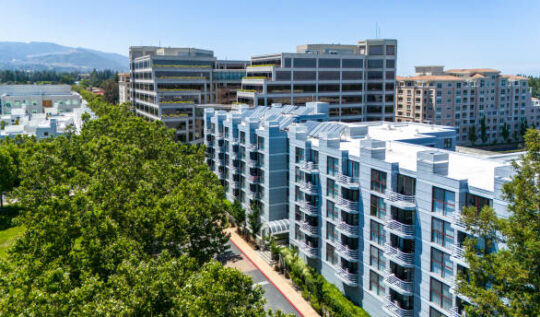Q Conditions and Q Removal: Winning Discretionary Cases in Los Angeles Real Estate
Wondering what Q Conditions and Q Removal mean—and why they matter for your development project?
If you’re developing property in Los Angeles, one of the first challenges you may face is zoning—and it’s not always as simple as matching your project to the map. In many areas, the zoning includes Q Conditions—special, site-specific rules that limit what you can build or how a property can be used.
These conditions might have been added years ago—sometimes decades—based on community concerns, outdated land use plans, or old environmental standards. But they still carry the full force of law. Ignoring them can stall your permits or trigger costly redesigns.
That’s where Q Removal comes in. If a Q Condition is no longer relevant—or blocks a project that fits the city’s latest housing, climate, or economic goals—you can file for discretionary approval to remove or modify it.
At JDJ Consulting Group, we work with developers, architects, and land use attorneys to guide these types of cases from start to finish. In this guide, we break down:
What Q Conditions are under the Los Angeles Zoning Code
When and how Q Removal works
What to expect during the entitlement process
Real-world case studies and success strategies
Understanding these tools can unlock hidden value in your site—and turn old zoning limits into new development opportunities.
Table of Contents
ToggleWhat Are Q Conditions in Los Angeles Zoning?

2.1 Definition and Legal Basis (LAMC §12.32-H)
The City Council or Planning Commission places Q Conditions—or “Qualified Conditions”—on a property during a zone change or General Plan amendment. These conditions alter what a zone typically allows, giving the City more control over future development.
Los Angeles Municipal Code (LAMC) Section 12.32-H authorizes Q Conditions. The City adopts them through an ordinance, making them legally enforceable just like any other zoning regulation.
Some Q Conditions are added to:
Limit the scale of a project (like height or square footage)
Restrict certain land uses (like bars, apartments, or cannabis)
Require specific public improvements (like traffic signals or sidewalks)
Others reflect community concerns, environmental mitigation, or project-specific agreements negotiated during past entitlement hearings.
Q Conditions stay on the land until they are formally removed or modified through a discretionary process—even if the property changes hands.
✔ Q Removal Readiness Checklist
2.2 Common Q Conditions Developers Encounter
While each Q Condition is tailored to a specific site, there are common types that frequently show up across Los Angeles. These include:
Height restrictions: Limits like 25 or 30 feet, even in zones that otherwise allow taller buildings
Use restrictions: Prohibitions on multi-family housing, retail, alcohol sales, or certain operating hours
FAR (floor area ratio) caps: Often lower than the base zoning allows
Traffic improvements: Mandatory turn lanes, traffic signals, or driveway relocations
Public benefits: Requirements for open space, street trees, or funding for local improvements
Some of these Q Conditions date back to the 1980s and don’t reflect today’s zoning goals or housing needs. Others may have been intended for a previous project that was never built.
2.3 How Q Conditions Affect Project Feasibility
Q Conditions often appear late in the process—after zoning research but before permit submission. This delay can create surprises for developers and architects. Some common impacts include:
Increased design costs: Having to redesign a project to meet a 25-foot height limit
Entitlement delays: Needing to apply for Q Removal before building permits are approved
Loss of density: Q Conditions might block TOC bonuses or mixed-use elements
Traffic and CEQA hurdles: Conditions may trigger new traffic studies or mitigation plans
That’s why it’s critical to pull and review the original zone change ordinance during due diligence. Even experienced teams can miss a Q Condition that’s hidden in a Council File or outdated ordinance.
What Is “Q Removal” and When Do You Need It?
3.1 Definition of Q Removal and Zoning Consistency
Q Removal is the formal process of eliminating or modifying one or more Q Conditions from a property’s zoning. This is a discretionary action, meaning it requires review by the Department of City Planning and, in most cases, a public hearing and approval by the City Council.
You may need Q Removal if:
A Q Condition prevents you from building the project allowed by your zone
The condition contradicts newer zoning tools (e.g., TOC, ED1, SB 330)
The condition no longer serves a public purpose
Q Removal must align with the General Plan and your area’s Community Plan. If your proposed use is consistent with those, and the Q Condition is out of date, your chances of approval are much higher
3.2 When Q Removal Becomes Necessary
You might need to pursue Q Removal in several real-world situations:
Redevelopment of an old commercial building blocked by a 1980s Q that limits height to two stories
Small lot subdivision on a parcel where a Q Condition prohibits more than two dwelling units
Infill housing near a Metro station, where Q Conditions block reduced parking allowed under TOC
Adaptive reuse of a warehouse, but a Q Condition limits the site to industrial uses only
Los Angeles is actively trying to support housing, density, and climate-smart development. Many old Qs no longer reflect those goals—especially after state-level housing laws and city updates like CHIP, ED1, and the 2021–2029 Housing Element.

3.3 CEQA Triggers and Q Removal
Because Q Removal is a discretionary action, it usually triggers California Environmental Quality Act (CEQA) review.
CEQA requirements will depend on:
Whether the project qualifies for a Class 32 Urban Infill Exemption
If traffic or environmental conditions have changed since the Q was adopted
Whether the removal could impact historic resources or public health
In some cases, a Negative Declaration (ND) or even a full Environmental Impact Report (EIR) may be needed. The environmental review is often where Q Removal projects succeed or stall—especially if traffic or community objections are raised.
Working with an experienced consultant can help secure a CEQA exemption or prepare the technical studies you’ll need to defend the project.
The Discretionary Process for Q Removal Cases
4.1 Filing the Case: Application, Site Plan, and Justification
Q Removal is not automatic—it requires a formal land use case with the Los Angeles Department of City Planning (LADCP). The process is similar to a typical discretionary zoning action like a Zone Change, Plan Amendment, or Conditional Use Permit.
To file a Q Removal case, you must prepare:
Master Land Use Application (LADCP Form)
Lists applicant info, entitlements requested, and project data.Letter of Justification
A written explanation showing why the Q Condition no longer serves a public purpose. This should cite consistency with:General Plan & Community Plan
New state/local housing laws (e.g., AB 130, TOC)
Site-specific facts (e.g., no longer near a school or traffic bottleneck)
Site Plans & Renderings
A clear, scaled site plan showing the proposed use or design affected by the Q Condition.Zoning & Planning Research
Copies of the ordinance that imposed the Q, relevant Council Files, CEQA documents, and zoning history.
After preparing these materials, your team will schedule a pre-application meeting with Planning staff. They’ll confirm the type of case and fees required.
4.2 Hearings, Public Notice, and Political Considerations
Most Q Removal cases require a public hearing and will be assigned to:
A Zoning Administrator (for Q Removal only)
City Planning Commission (CPC) (for Q + Zone Change or Plan Amendments)
From there:
Noticing: You must notify neighbors within 500 feet, post a sign, and provide a radius map.
Hearing: You’ll present the case, answer questions from the planner and public, and submit evidence supporting your request.
Recommendation: Planning staff prepares a report and recommendation.
Final Decision:
For Q Removal-only cases, the Planning Director or Zoning Administrator may decide.
For combined Zone Change/Q Removal cases, City Council approval is required.
Political sensitivity matters. Many Q Conditions were imposed due to past community opposition. You must be prepared for:
Neighborhood Council reviews
CD (Council District) feedback
Local media or advocacy group attention
A solid outreach strategy and visual presentation are essential.
4.3 Final Approval and Ordinance Changes
If your Q Removal case is approved, the City will:
Draft and adopt a new ordinance removing the Q Conditions
Record the updated ordinance with the County
Issue a Certificate of Determination with final terms and deadlines
If CEQA review was part of the case, your CEQA document (exemption, ND, or EIR) is also adopted at this stage.
Only once the new ordinance is recorded are the Q Conditions officially lifted from the property. This must happen before Planning will process your permits (e.g., Building & Safety Plan Check).
Table: Q Removal Case Types by Complexity
| Case Type | Approval Body | CEQA Trigger | Typical Timeline | Political Sensitivity |
|---|---|---|---|---|
| Q Removal Only | Zoning Admin or Director | Often Exempt (Class 32) | 6–9 months | Moderate |
| Q Removal + Zone Change | CPC + City Council | ND or MND likely | 12–18 months | High |
| Q Removal + Plan Amendment | CPC + PLUM + Council | EIR often required | 18–24 months | Very High |
Key Takeaways for Developers
Start early: Entitlements involving Q Removal can extend your timeline by 6–12+ months.
Do a zoning diagnosis before acquisition or design. Qs are sometimes buried in Council Files from decades ago.
Pair with CEQA strategy: Know which exemption or review tier you’ll need.
Coordinate politically: A Council Office’s position can make or break a discretionary approval.
Case Studies: Successful Q Removal and Lessons Learned
These real-world examples show how Q Removal helped unlock development potential in Los Angeles. Each project faced outdated zoning conditions that blocked housing, adaptive reuse, or density—but with the right strategy, the team secured approvals and moved forward.
5.1 Small Lot Subdivision in South LA
Challenge:
A developer acquired a 10,000 sq. ft. lot zoned R2, intending to build a 7-unit small lot subdivision. But an old Q Condition from 1986 limited the site to no more than two dwelling units. This Q was added in response to a long-defunct church use and neighborhood opposition to multifamily development.
Strategy:
Filed a Q Removal case with LADCP
Cited consistency with the 2021–2029 Housing Element and small lot subdivision guidelines
Used a CEQA Class 32 exemption for urban infill housing
Met with the Council Office and Neighborhood Council in advance to build support
Outcome:
The project was approved in 10 months, including a clean removal of the Q Condition. The site now contains 7 for-sale homes near transit and local amenities.
Lesson Learned:
Even restrictive Qs on small infill lots can be removed with proper policy alignment and early outreach.
5.2 Adaptive Reuse in Hollywood
Challenge:
An investor planned to convert a vacant, two-story commercial building into workforce housing units. But a Q Condition from a 1991 zone change prohibited residential uses due to a prior business relocation deal. The Q remained on the property long after the original conditions expired.

Strategy:
Submitted a Q Removal + Zone Change case
Commissioned a traffic memo and CEQA exemption justification
Argued that residential use aligned with the Hollywood Community Plan Update
Submitted letters of support from nearby tenants and a local housing advocacy group
Outcome:
Planning Commission recommended approval. The City Council adopted a new ordinance removing the Qs and approving RAS3 zoning. No EIR was required.
Lesson Learned:
Q Conditions that no longer serve a public purpose—and block adaptive reuse—are strong candidates for discretionary removal.
5.3 Transit-Oriented Mixed-Use in Koreatown
Challenge:
A TOD (Transit Oriented Development) project proposed 6 stories, 80 units, and ground-floor retail near a Metro station. But a 1984 Q Condition limited FAR and required 2:1 parking, making the project unfeasible. The Qs were based on outdated traffic models.
Strategy:
Filed Q Removal with TOC incentives under Measure JJJ
Used a project-specific traffic study to justify reduced parking
Referenced CHIP and AB 2097 to show alignment with state housing law
Engaged local business groups to speak at the CPC hearing
Outcome:
The City removed the Q Conditions, accepted TOC bonuses, and approved the CEQA exemption. The project is now under construction.
Lesson Learned:
State housing laws and city density programs can help override outdated Qs if the case is supported by data and public benefits.
Summary Table: Case Highlights
| Project Type | Obstacle Q Condition | Solution Used | Outcome |
|---|---|---|---|
| Small Lot Subdivision | 2-unit limit (1986) | Q Removal + CEQA Exemption | 7 homes approved |
| Adaptive Reuse | No residential uses (1991) | Zone Change + Q Removal | Workforce housing OK’d |
| Mixed-Use TOD | High parking ratio, FAR limits | TOC Incentives + Traffic Memo | 6-story mixed-use built |
How to Build a Winning Q Removal Strategy
Not all Q Removals succeed. Some stall out at public hearings. Others die under CEQA. But the ones that get approved? They share a common theme: strategy, preparation, and timing.
Here’s how to position your project for success.
6.1 Zoning Research and Case History
Before you draw a site plan or submit a filing, start with zoning research.
Many Q Conditions are buried in City Council ordinances from decades ago. They’re not always visible on ZIMAS or GIS platforms. You’ll need to:
Pull the original zone change ordinance from the Council File Index
Review the ordinance text for each “Q” and its intent
Check if the Q was related to a past project that was never built
Identify any related “T” (transitional) or “D” (development) conditions
Also look for:
Previous entitlements on the parcel (case numbers, expired CUPs, variances)
CPC hearing minutes or staff recommendations
Any expired or lapsed mitigation measures tied to CEQA
Tip: JDJ often finds that a “dead” project left Q Conditions behind, and no one ever removed them. These are strong candidates for removal with the right case record.
6.2 Prepare for CEQA and Technical Studies
Q Removal cases usually trigger CEQA. Your strategy should include an early environmental review plan.
Here’s what to prepare:
CEQA Class 32 Exemption (Infill Projects)
Applies to sites under 5 acres in urban areas that meet transit, infrastructure, and land use compatibility tests.Negative Declaration (ND)
Needed if there’s potential environmental impact but it can be mitigated without an EIR.Mitigated Negative Declaration (MND)
Common if traffic, noise, air quality, or other impacts must be mitigated.EIR (Environmental Impact Report)
Required in rare, large, or sensitive-area cases—adds time and cost.
Also consider:
Traffic study or LADOT memo
Noise and shadow studies (especially in high-density or transitional neighborhoods)
Biological/historic resources survey, if applicable
Tip: Tie CEQA strategy to current policies like ED1, CHIP, or SB 1211 to show broader compliance and qualify for exemptions.
6.3 Outreach and Political Strategy
Land use in Los Angeles is political. Even legally sound projects can be denied if there’s strong public opposition or the Council Office isn’t on board.
Plan your engagement early:
Neighborhood Councils (NCs): Identify which NC has jurisdiction and request to present at their Land Use Committee.
Council District Office (CD): Request a courtesy meeting with the Planning Deputy. Share renderings and benefits.
Community Briefings: Meet with neighbors, business groups, or nonprofits that may be impacted—or could support the project.
Key tactics:
Create a clear one-pager explaining the project and why Q Removal is needed
Use visuals: renderings, shadow studies, traffic comparisons
Highlight alignment with General Plan, Housing Element, and zoning code updates
Tip: Document outreach and support in your submittal package. It can help staff and commissioners feel more confident recommending approval.
Flowchart: Q Removal Strategy (Interactive HTML option available)
| Step | What to Do | Who Handles It | Timeline |
|---|---|---|---|
| Zoning Research | Pull ordinance, Council Files, CPC cases | JDJ or consultant | 1–2 weeks |
| Pre-App Meeting | Confirm case type, CEQA path | Applicant + LADCP | 1–2 weeks |
| Filing Entitlement Case | Submit forms, site plans, justification | Applicant | Filing window |
| CEQA Review | Draft MND or exemption memo | CEQA team | 2–4 months |
| Community Outreach | Meet NC, CD office, and stakeholders | Project team | Parallel to CEQA |
| Public Hearing + Decision | Present to CPC or ZA | Applicant + counsel | 2–3 months |
| Ordinance Adoption & Record | City Council approval + recordation | City Clerk | 1–2 months |
Don’t rely on base zoning alone. Always pull the Qs.
Start with a feasibility diagnosis. JDJ can provide zoning history, CEQA flags, and entitlement timelines in the first 2 weeks.
Integrate Q Removal with density bonuses, TOC, or SB 330. This reduces risk and increases unit count.
Document everything. From outreach emails to LADOT memos—compile it all. You may need it at appeal or litigation stages.
Need help with Q Conditions or the Q Removal process in Los Angeles?
At JDJ Consulting Group, we help developers, architects, and property owners move their projects forward—especially when zoning conditions stand in the way. If your site has outdated Q Conditions or needs a discretionary approval, we’ll guide you through the entire process.
From zoning research to CEQA to City Council approval—we’ve got you covered.
Call us at +1 (818) 827-6243 or contact us online to set up a consultation. Let’s talk about how to move your project ahead.
| Case Type | Approval Body | CEQA Level | Timeframe |
|---|---|---|---|
| Q Removal Only | Zoning Admin | Likely Exempt | 6–9 months |
| Q + Zone Change | City Planning Commission | ND or MND | 12–18 months |
| Q + Plan Amendment | City Council | EIR Likely | 18–24 months |
Frequently Asked Questions About Q Conditions and Q Removal
What’s the difference between Q, T, and D Conditions in Los Angeles zoning?
Los Angeles uses Q, T, and D Conditions to customize zoning approvals.
Q Conditions restrict land use, height, or density. The City adds them during a zone change. They stay in place until the City Council removes them by ordinance.
T Conditions require specific improvements before final approval. These often involve infrastructure like street widening or utility upgrades.
D Conditions cap physical development, like floor area or building height. They limit projects even when the base zone allows more.
Learn more from the JDJ’s Entitlements & Permitting Guide.
Can I apply to remove a Q Condition without changing the zone?
Yes. You can file a Q Removal Only case. You don’t need to change your zone if your project already fits the base zoning.
This applies when:
A Q Condition blocks something the zone allows
The Q limits residential use, building height, or density
The Q no longer matches the City’s land use policies
Developers often use Q Removal to:
Eliminate outdated parking or height limits
Add density using TOC or ED1 tools
Clear the way for mixed-use or infill projects
How long does a Q Removal case take in Los Angeles?
Most Q Removal cases take 6 to 18 months, depending on complexity and CEQA.
Typical timelines:
Q Removal Only + CEQA Exemption: 6–9 months
Q Removal + Zone Change or Plan Amendment: 12–18 months
Projects requiring an EIR or facing appeal: 18+ months
You can speed up the timeline by:
Using CEQA Class 32 (infill) exemptions
Starting early with community outreach
Coordinating with your Council District office
Do Q Conditions expire over time?
No. Q Conditions do not expire automatically. They remain active until the City removes them through a new ordinance.
This means:
A 1980s Q can still block your 2025 project
You must check every site for historic ordinances
A zoning map alone won’t show Q overlays
Let JDJ run a zoning and ordinance scan. We uncover hidden conditions before you submit plans. Contact us.
What documents do I need for a Q Removal case?
You need to prepare a complete entitlement application for City Planning.
Required items include:
Master Land Use Application (LADCP)
Letter of Justification
Site plan and project description
Original Q ordinance (PDF or scanned copy)
CEQA memo or exemption documentation
Community outreach documentation (NC meetings, CD correspondence)
Visit our Entitlements & Permitting Services page to see how we manage the process for you.
Can I use a CEQA exemption for Q Removal?
Yes. Many Q Removal cases qualify for CEQA exemptions.
Most common:
Class 32 (Urban Infill Projects)
Applies if your site:Is under 5 acres
Is zoned for urban use
Meets transit and infrastructure requirements
Doesn’t impact sensitive resources
Statutory Exemptions
Use laws like SB 131, SB 1211, or AB 2097 for transit or ADU-related projects.
You must still document your exemption. Our team helps with that from the start.
What happens if someone appeals my Q Removal case?
The appeal moves your case to a higher decision-making body, like the City Planning Commission or City Council.
Most appeals raise concerns about:
CEQA issues
Traffic or noise impacts
Inconsistency with zoning plans
Lack of public outreach
To protect your case:
Document every meeting and study
Respond clearly to opposition points
Bring support from your Council Office and community groups
How do I check if my property has Q Conditions?
Start with these tools:
ZIMAS: Check zoning overlays
LADCP Council File Index: Search ordinances
Parcel Profile Reports (via LADBS or Planning)
Previous planning case records (ZA, CPC, CHC files)
Or ask JDJ to perform:
A full zoning and entitlement scan
Q/D/T condition retrieval
Case strategy session with CEQA overlay
Check our Services Page for a full list of our entitlement tools and planning reports.
Flowchart: Step-by-Step Q Removal Process
1. Zoning Research
Pull Q Conditions and ordinance history before submitting plans.
2. Pre-App Meeting
Meet with LADCP to confirm filing type and CEQA requirements.
3. CEQA Strategy
Draft exemption or prepare technical studies based on impacts.
4. Community Outreach
Present to Neighborhood Councils and Council Office early.
5. Public Hearing
Present your case before ZA or CPC with supporting documents.
6. Ordinance Adoption
City Council adopts Q Removal; project can proceed to permitting.






Best Construction Consulting Firms in Los Angeles (2025 Guide)
July 10, 2025
[…] We help clients solve challenges before they turn into costly delays—whether that’s securing a Q Condition removal, unlocking a CEQA exemption, or pushing permits through a jammed Planning […]
Entitlement Process in Los Angeles | JDJ Consulting Guide
July 22, 2025
[…] or more complex projects usually require discretionary approval. These involve a full review process, public hearings, and sometimes […]
How to Fill Out the City Planning Application Form in Los Angeles
July 22, 2025
[…] Clear conditions of approval […]
Best Construction Consulting Firms in Los Angeles: 2025 Guide – JDJ Consulting
August 21, 2025
[…] We help clients solve challenges before they turn into costly delays—whether that’s securing a Q Condition removal, unlocking a CEQA exemption, or pushing permits through a jammed Planning […]
The Complete Entitlement Process in Los Angeles – A JDJ Consulting Group Guide – JDJ Consulting
August 21, 2025
[…] or more complex projects usually require discretionary approval. These involve a full review process, public hearings, and sometimes […]